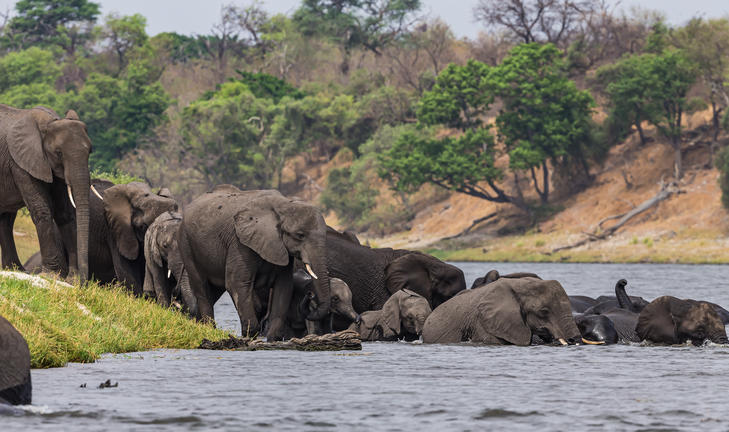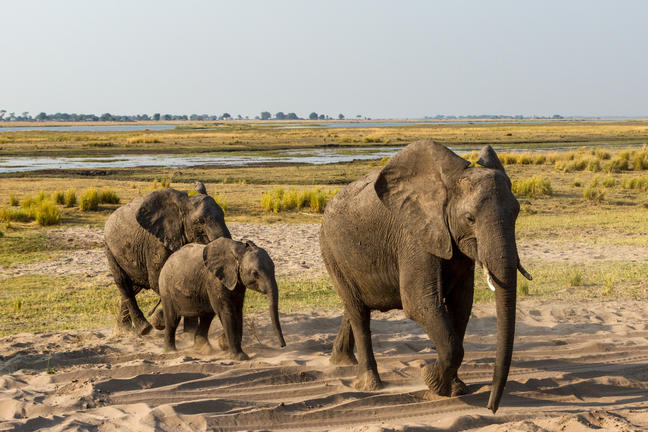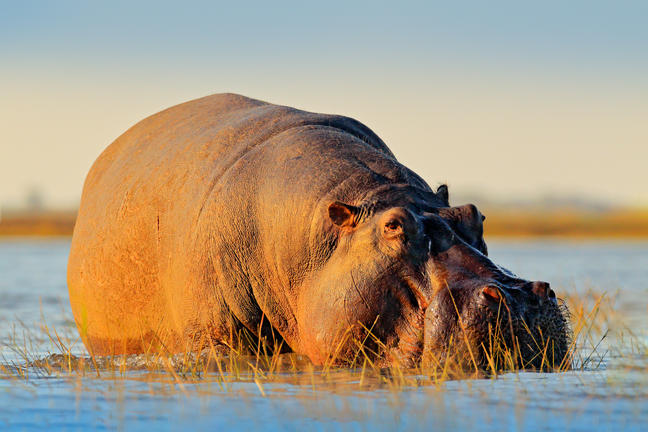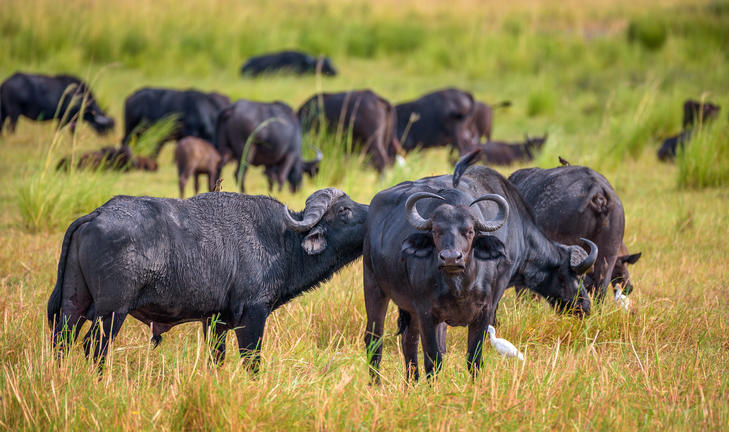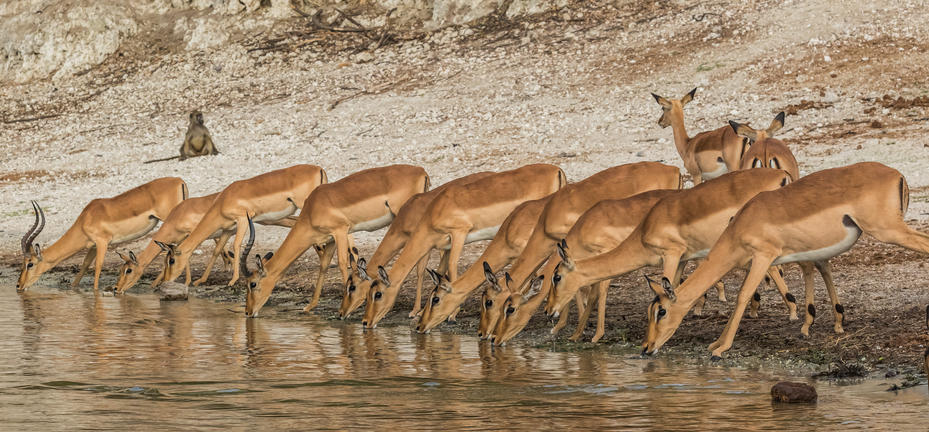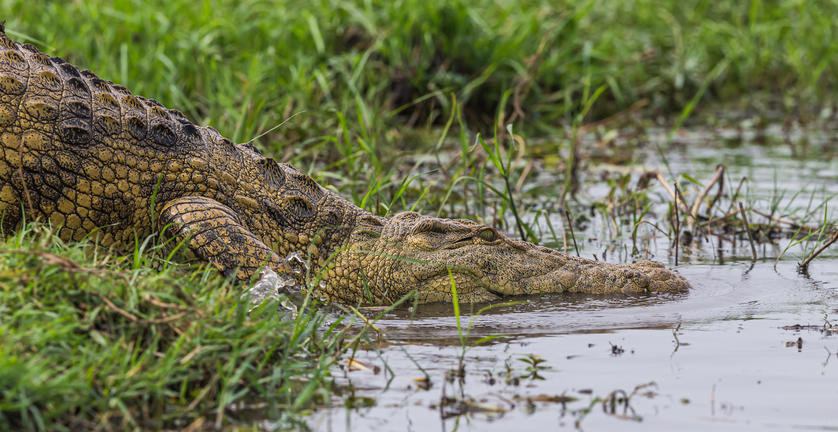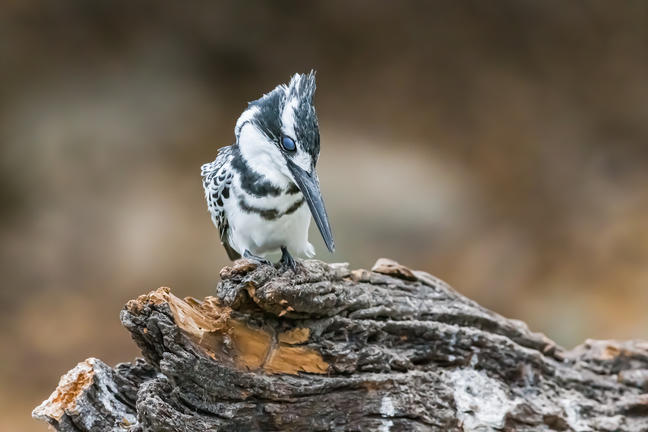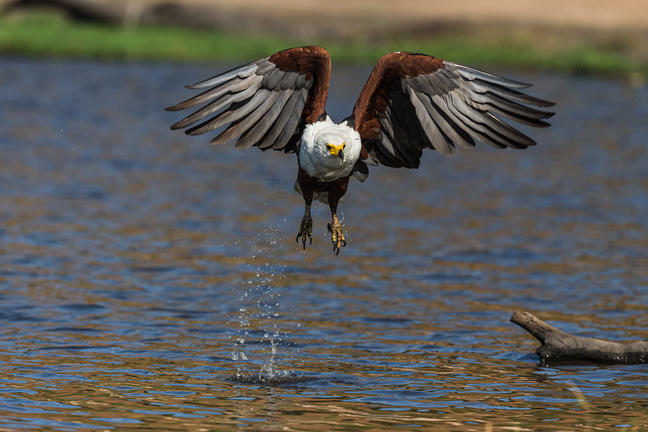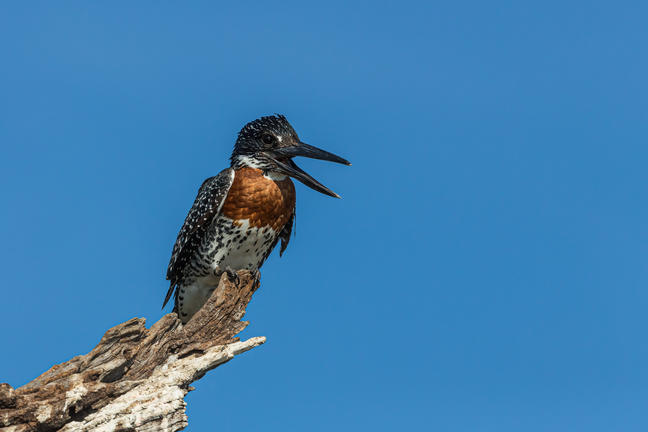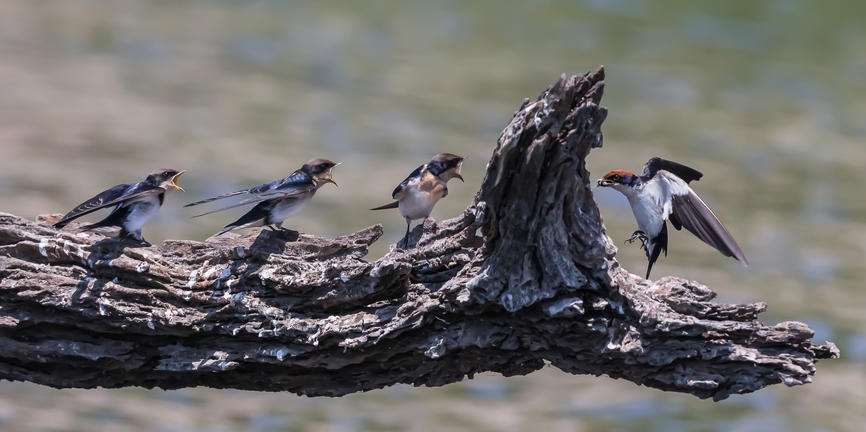Far in the northeast of Botswana, lying alongside the mighty Chobe River is the land of elephants. More than 50 000 pachyderms make up a migratory population which come from the Caprivi Strip in Namibia and the Zambezi floodplains of Zambia and Zimbabwe. Wars within the region have sometimes halted these migrations, but with peace comes a new migration. Led by the matriarchs with their deeply buried memories of water, quiet whiffles, soft footfalls and occasional trumpets, these herds, calling to other herds cross vast distances. With low earth-vibrating rumbles, they make their way through sandy terrain, lush floodplains, dense forests of cathedral mopane trees, and broadleaf woodlands that seem to stretch forever. Eventually the elephants, as well as massive herds of Cape Buffalo, reach the Chobe River. Along its banks, in the shade of the trees large prides of lions watch them as they slack their thirst, looking for their next meal.
The first sight of the dazzling, deep blue Chobe River protecting the 10 700 km2 of the northern Kalahari Desert is something, just like the elephants, you will never forget. But it’s not only elephants and buffalo, nor is it not only the river that make up the Chobe National Park, the third largest in Botswana. There are four distinct ecosystems with the Chobe National Park. Each provide sanctuary to different species of wildlife. And the wildlife is abundant. The Savuti Channel in the west, the predator-rich Linyanti Marshes in the northwest, the Arid Hinterland, and the fertile plains and thick forests of Serondela in the extreme northeast. Baboon, gentle giraffe, hyena, impala, lechwe, majestic kudu, puku, sable, solitary leopard, lion, warthog, waterbuck, the rare painted wild dog, blue wildebeest, and zebra are among the many creatures that call Chobe home. In fact, Chobe has one of the largest concentrations of game in Africa.
The original inhabitants of this paradise were the San bushmen. British missionary and explorer, David Livingstone, made his way through here to Mosi-oa-Tunya, now mostly known as Victoria Falls. Thankfully, the area became a protected game reserve in 1961, and in 1968, a national park, which has kept out the big-game hunters. Chobe is a true wilderness. An African treasure. Careful moderation of the number of visitors to the park keeps the feeling of remoteness and exclusivity.
The river is also home to its famed riverboat safaris. These are the best way to enjoy the river and watch the hippos, crocodiles and leguvaans which can grow up to 1,5M in length. In fact, the riverboats can be the best way to watch all the game, including the birds. Over 450 species of bird live here, including Fish eagles with their haunting cry, storks, wire-tailed swallows and bea-eaters. Some of the most beautiful are the white-backed night herons.
If you prefer to be on land, there are stunning safari lodges, camps, lodges and ‘under-canvas’ sites. The land safaris, with experienced and knowledgeable guides or self-guided, are as exciting and encounter rich as any on the water in Chobe.
As Chobe National Park is one of the best national parks in Africa, its unparalleled beauty provides a lifetime of unforgettable memories.
